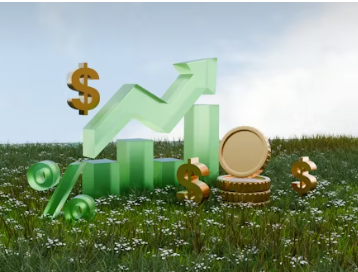Global Economic Outlook: Trends and Risks for 2025

Global Economic Outlook: Trends and Risks for 2025
Introduction
As the world navigates post-pandemic recovery and geopolitical shifts, understanding the global economic outlook for 2025 is crucial for investors, policymakers, and businesses. This article analyzes key trends shaping the economy, potential risks, and opportunities that may impact growth, inflation, trade, and financial markets in the coming year.
Key Global Economic Trends in 2025
1. Continued Economic Recovery and Growth
Following disruptions caused by COVID-19, many economies are expected to maintain moderate growth as consumer demand rebounds and supply chains stabilize.
- Emerging markets may lead growth due to demographic advantages and industrialization.
- Developed economies will focus on technological innovation and green transitions.
2. Inflation Dynamics and Monetary Policy
Inflation remains a central concern:
- Some countries may experience persistent inflation due to supply constraints and energy prices.
- Central banks may adjust interest rates to balance growth and inflation control.
- Divergent monetary policies could cause capital flow volatility.
3. Digital Transformation Acceleration
Technology adoption will accelerate, impacting productivity and labor markets.
- Growth in fintech, AI, automation, and remote work technologies.
- Increased cybersecurity investments.
4. Climate Change and Green Economy
Sustainability is shaping economic policies:
- Investments in renewable energy and carbon reduction initiatives.
- Carbon pricing and green bonds will influence capital allocation.
5. Geopolitical Tensions and Trade Relations
- Ongoing US-China competition influences trade policies and supply chains.
- Regional trade agreements and reshoring trends reshape global commerce.
Potential Risks to Global Economy
1. Inflationary Pressures and Cost Shocks
- Persistent inflation may erode purchasing power and slow consumer spending.
- Energy price volatility remains a risk due to geopolitical conflicts.
2. Financial Market Volatility
- High debt levels in some countries raise concerns over defaults.
- Stock and bond markets may experience corrections amid policy tightening.
3. Supply Chain Disruptions
- Continued disruptions could impact manufacturing and trade.
- Semiconductor shortages and logistics bottlenecks remain issues.
4. Climate-Related Risks
- Natural disasters and transition risks can disrupt economies and financial systems.
5. Pandemic Resurgence and Health Crises
- New variants or other diseases could impact labor markets and consumption patterns.
Opportunities in the Global Economy
1. Infrastructure and Development Investments
- Government stimulus focused on infrastructure, especially green projects.
2. Innovation and Productivity Gains
- Advancements in AI, 5G, and biotechnology drive new industries.
3. Financial Inclusion
- Digital finance expands access to underserved populations worldwide.
Implications for Investors
- Diversify portfolios globally to manage regional risks.
- Consider inflation-protected assets and sectors benefiting from green transition.
- Monitor central bank policies and geopolitical developments closely.
Conclusion
The global economic outlook for 2025 is characterized by cautious optimism amid uncertainties. Navigating inflation, geopolitical tensions, and climate challenges will be critical for sustainable growth. Investors and policymakers must stay agile to capitalize on emerging opportunities while mitigating risks in this evolving landscape.
Up next: How to spot financial scams and protect your money from fraud.




